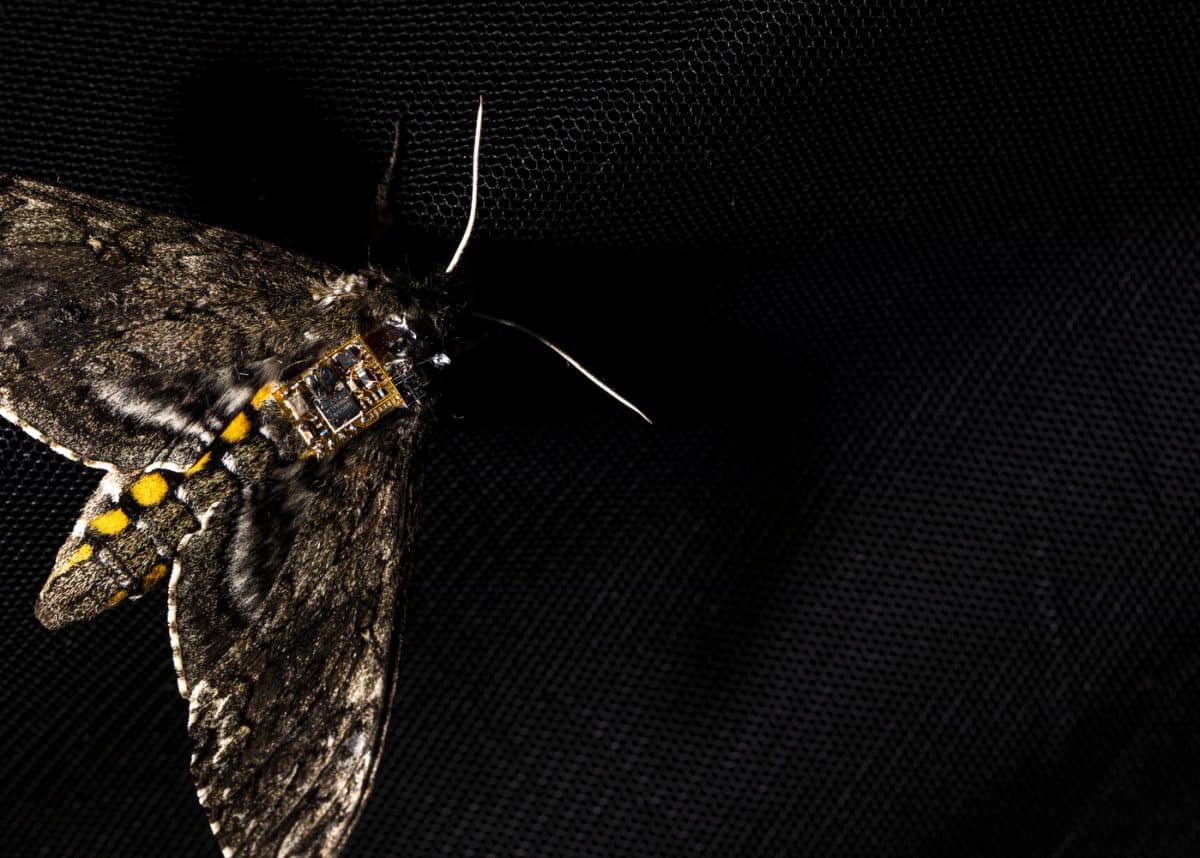There are many places in this world that are hard for scientists to study, mainly because it’s too dangerous for people to get there.
Now researchers at the University of Washington in the US have created one potential solution: A sensor system weighing only 98 milligrams – about one-tenth the weight of a jellybean – that can ride aboard a small drone or an insect, such as a moth, until it gets to its destination.
Then, when a Bluetooth command is sent, the sensor is released from its perch and can fall up to 22 metres, which the about the height of a six-storey building, and land without breaking.

The sensor system shown here on top of a US penny coin. Photo credit: Iyer et al./MobiCom 2020
Inspired by military air drops
Once on the ground it collects data, such as temperature or humidity, for almost three years.
“We have seen examples of how the military drops food and essential supplies from helicopters in disaster zones,” said Shyam Gollakota, an Associate Professor at the University.
“We were inspired by this and asked the question: Can we use a similar method to map out conditions in regions that are too small or too dangerous for a person to go to?”
This is groundbreaking research
He added: “This is the first time anyone has shown that sensors can be released from tiny drones or insects such as moths, which can traverse through narrow spaces better than any [normal] drone and sustain much longer flights.”
While industrial-sized drones use grippers to carry their payloads, in this case the sensor is held on the drone or insect using a magnetic pin surrounded by a thin coil of wire.
To release it, a researcher on the ground sends a wireless command that creates a current through the coil to generate a magnetic field. This makes the magnetic pin pop out of place and sends the sensor on its way to earth.

Sensor will slowly fall to earth
This tiny piece of technology was designed with its battery, the heaviest part, in one corner. As the sensor falls it begins rotating around the battery, generating additional drag force and slowing its descent.
That, combined with the sensor’s low weight, keeps its maximum fall speed at a relatively low 18km/h and allows it to hit the ground safely.
The researcher team envision using this system to create a sensor network within any area that requires study. Among the next steps is to replace the battery with a solar cell.












